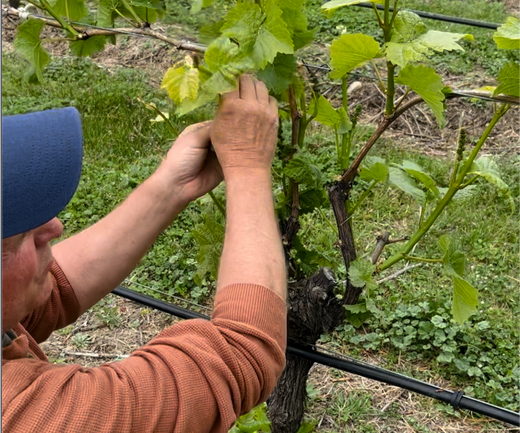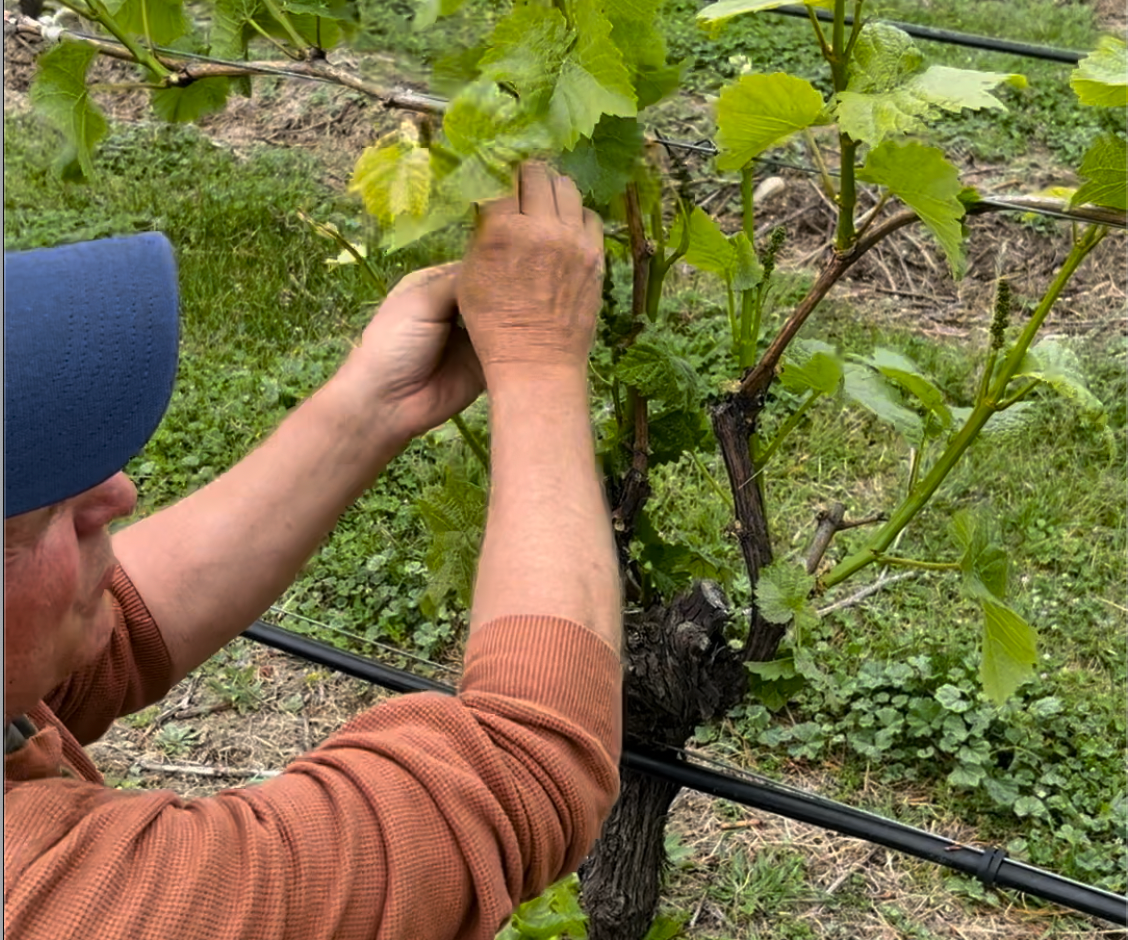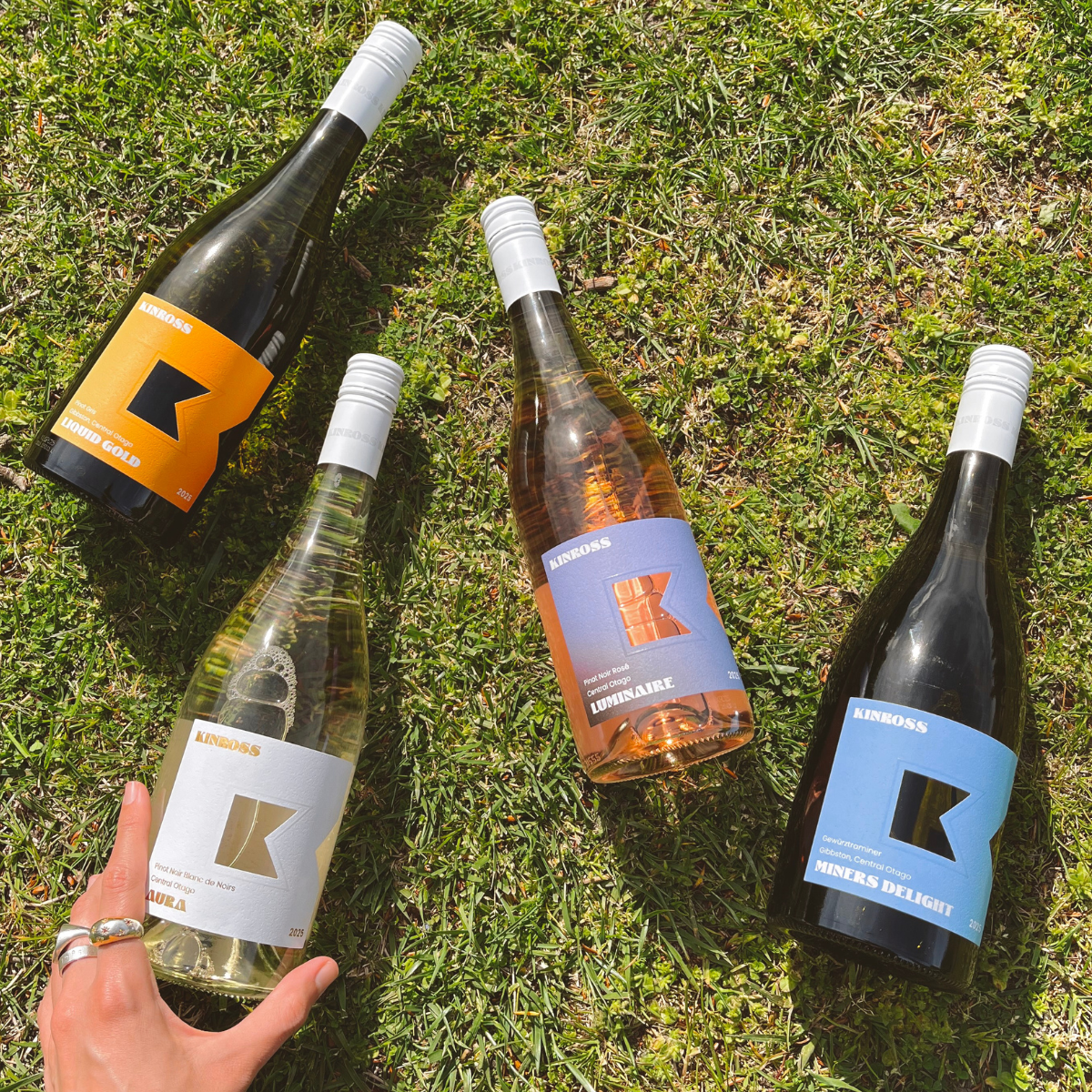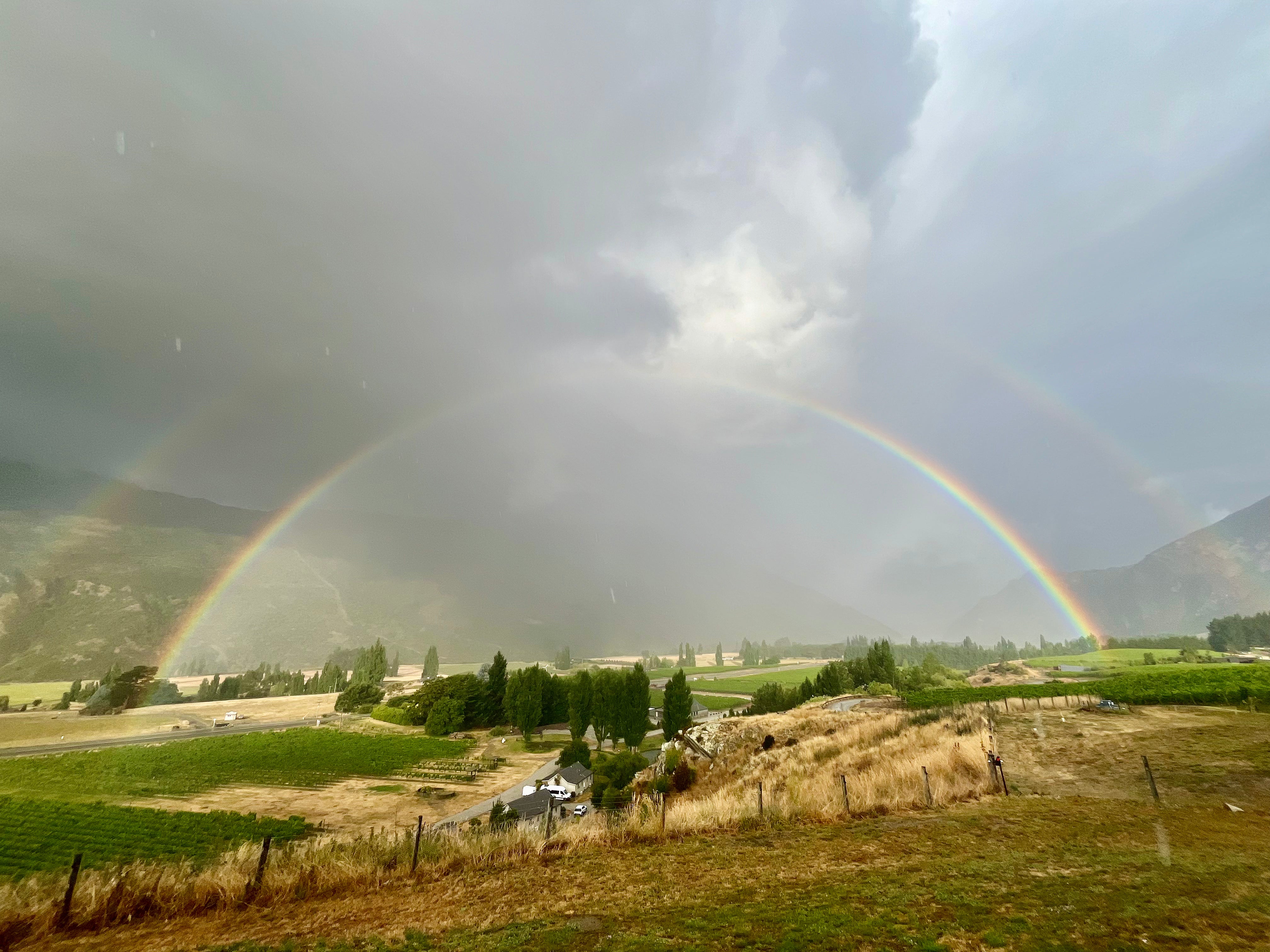
Spring 2024 at Kinross: Navigating the Challenges of a "Dodgeball Season" in the Vineyards
Central Otago Vineyard Update
by Gary Crabbe - Kinross Vineyard Manager
Spring has arrived at Kinross, and with it, the usual buzz of excitement and anticipation. But this year, things feel a little different. After 15 years in the wine industry, I thought I’d seen just about every kind of season, but 2024 has surprised even me. I’m calling this the “Dodgeball Season” because every day feels like we’re dodging another curveball from Mother Nature. Snow one day, frost the next, and then just for good measure, a bit of sunshine before more wild weather rolls in.
This isn’t El Niño, La Niña, or any other predictable pattern. It’s a true grab bag of unpredictability. Despite it all, though, we’re holding steady. Our vines are looking strong, healthy, and remarkably resilient. With fingers firmly crossed, we’re hopeful that the next few weeks will settle down and give us the consistent conditions we need to start this vintage off on the right foot.
Shoot Thinning: A Personal Touch on Vineyard Care
Spring in the vineyard is all about setting the stage for the months ahead. Right now, we’re laser-focused on shoot thinning, a task that might not sound all that glamorous, but trust me, it’s one of the most important jobs of the year.
If you’ve ever walked through our vineyards and wondered how the vines always look so perfectly balanced, shoot thinning is the secret. It’s not just about removing shoots for the sake of tidiness; it’s about ensuring every vine gets the sunlight, airflow, and space it needs to thrive.
Here’s a look at how it works, and why we’re so passionate about this step in the process.
What Is Shoot Thinning?
Imagine you’ve got a rose bush that’s grown a bit wild, it’s sprouting shoots all over the place, and you know it needs some TLC to get it back into shape. That’s exactly what happens with our vines in the spring. They’re full of energy and growing like crazy, sending out more shoots than we actually want or need.
Our job is to get in there and remove the ones that aren’t pulling their weight. Shoots growing out of old wood? Gone. Doubles or triples in the same spot? Snip. The aim is to leave the shoots that will produce the best fruit, while also creating space for airflow and sunlight to reach every part of the vine.
It’s Not Just Science, It’s Art
Shoot thinning isn’t just about following a formula, it’s a real hands-on, vine-by-vine process. No two vines are the same, and each one requires a bit of thought and care to get it just right.
For me, it’s like solving a puzzle. You have to step back, take in the structure of the vine, and decide which shoots to keep and which to remove. By the time you’re done, what was once a tangled mess transforms into something beautiful—a balanced, well-ventilated vine ready for the season ahead.
Why It Matters
This step is absolutely critical for the health of the vineyard and the quality of our grapes. Here’s why:
Better Airflow:
When the vines aren’t overcrowded, air can circulate freely, which helps prevent mold and mildew from taking hold.
More Sunlight:
With fewer shoots in the way, sunlight can reach the leaves and clusters, giving the grapes the perfect conditions to ripen.
Optimal Energy Use:
By cutting back the excess, the vine can focus its energy on the shoots that really matter, producing fewer but higher-quality bunches of grapes.
Looking Ahead
When we finish shoot thinning, the vineyard looks transformed. The vines stand tall and open, their canopies letting in dappled sunlight. It’s one of those moments where you can really see the potential of the season ahead.
Of course, nothing in this industry is guaranteed, especially in a season as unpredictable as this one. But we take it one day (and one dodgeball) at a time, always with the bigger picture in mind.
Spring may be throwing us curveballs, but the resilience of our vines and the dedication of our team remind me why I love this work. Here’s to a promising growing season and hopefully, a little more sunshine and stability in the weeks to come.







